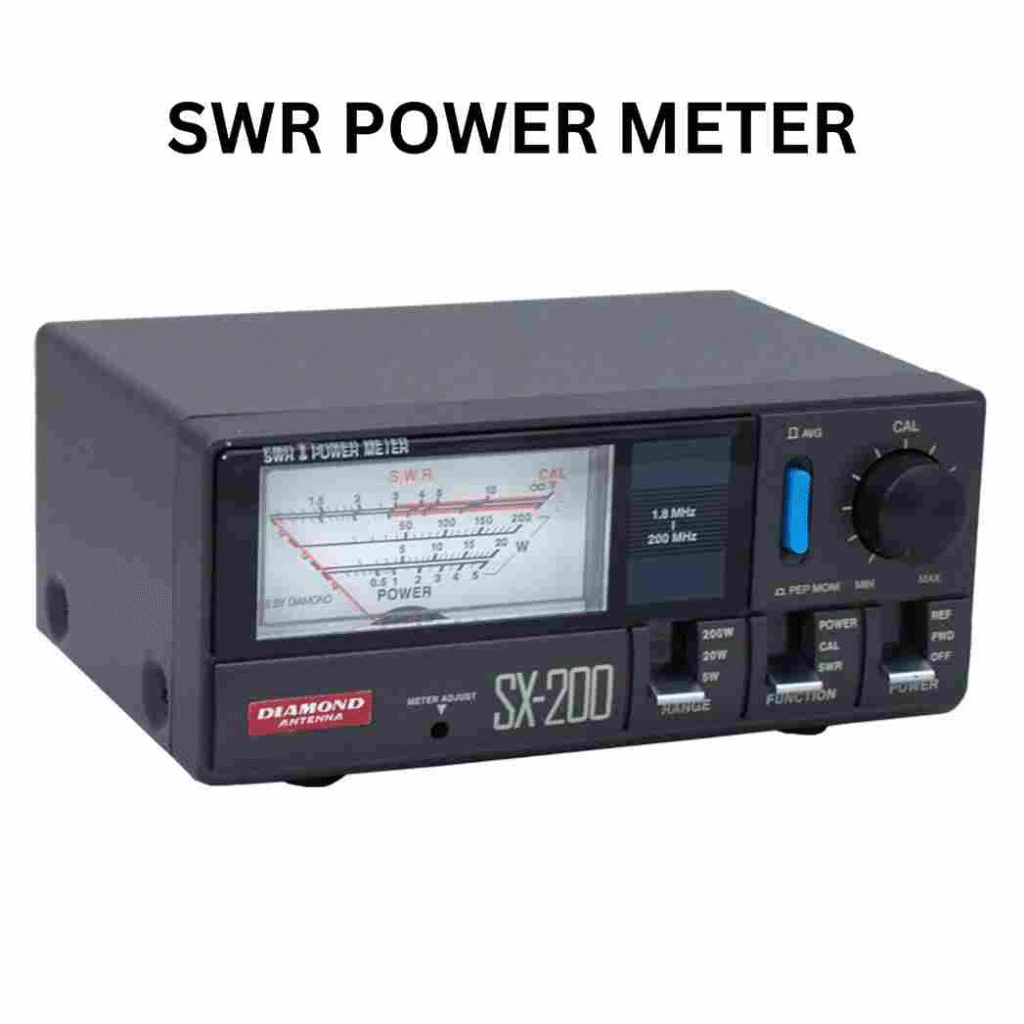
What is an SWR meter for a ham radio operator?
A standing wave ratio (SWR) meter is an instrument used by amateur radio operators to measure the efficiency of their antenna system. The SWR meter measures the ratio of the maximum and minimum voltage or current at any point along a transmission line to achieve a value of 1:1, which indicates a perfect match between the transmitter and the antenna.
An SWR meter is an essential tool for ham radio operators because it helps them determine whether their antenna is properly tuned and configured, which is critical for achieving clear, stable communications. An SWR meter can also help identify and correct problems with the antenna or transmission line that can lead to low power output, high levels of reflected power, and other issues.
By regularly measuring and adjusting the SWR, ham radio operators can ensure that their antenna system is working optimally, which can help improve the performance of their overall communication.
What is a power meter for a ham radio operator?
A power meter is an instrument used by amateur radio operators to measure the amount of power being transmitted or received by their radio equipment. The power meter provides a direct measurement of the electrical power being transmitted or received, usually in units of watts.
Power meters are used by ham radio operators to ensure that their equipment is operating within safe limits and to help optimize the performance of their communications. For example, a ham radio operator may use a power meter to adjust the output power of their transmitter to ensure that it is not overloading the antenna system or other equipment, or to optimize their signal strength for long-distance communications.
Power meters can also be used to diagnose problems with the radio equipment or the transmission line. For example, if the power meter indicates that the transmitted power is much lower than expected, it could indicate a problem with the antenna system or the transmission line that is reducing the efficiency of the system.
In summary, power meters are an essential tool for ham radio operators, allowing them to monitor and adjust the performance of their equipment, ensuring safe and efficient communications.
REFER – HOW TO CORRECTLY USE AN SWR METER
5 Best SWR Meters for HAM Radio
List of SWR meter and Power meter used by ham radio operator for testing antenna
Here is a list of some popular SWR (Standing Wave Ratio) meters and power meters used by Ham radio operators for testing antennas:
1) MFJ Enterprises SWR/Power Meter
2) Bird Electronics 43 Wattmeter Element
The 43 Wattmeter is a field-proven, portable, insertion-type instrument designed to measure forward and reflected power in coaxial transmission lines under any load condition. With accuracy of ± 5%, it accurately measures RF power with low added VSWR and insertion loss. Provide a wide choice of frequency ranges and power levels, giving the Model 43 amazing flexibility. Link to product info.
3) Daiwa CN-101L SWR/Power Meter
Check the product review of Daiwa CN-101L SWR/Power Meter | Daiwa SWR meter review
4) Palstar PM2000A Cross Needle Power/SWR Meter
5) Diamond Antenna SX400 SWR/Power Meters SX400
These are just a few examples, and there are many other models available on the market. The choice of the right meter for your needs will depend on various factors such as frequency range, accuracy, ease of use, and cost.
What are the most commonly used SWR meters and power meters by ham radio operators in the United States?
Among amateur radio operators in the United States, two of the most commonly used instruments for measuring standing wave ratio (SWR) and power are the MFJ-269C and the LDG Z11 Pro II.
The MFJ-269C is a compact, versatile SWR and power meter that covers 1.8–170 MHz, including the 6-meter, 2-meter, and 70-centimeter amateur radio bands. It has a large, easy-to-read meter display and can measure forward and reflected power, as well as SWR.
The LDG Z11 Pro II is an automatic antenna tuner that also includes an SWR and power meter. It has a compact design and can handle power levels of up to 125 watts. The meter display is easy to read and shows both forward and reflected power, as well as SWR.
Link for LDG Z11 Pro II manual.
Both the MFJ-269C and the LDG Z11 Pro II are popular in the United States among amateur radio operators for their accuracy, durability, and ease of use.
Commonly used SWR and Power meter by a ham radio operator in Canada, Russia, South Africa, Australia, New Zealand, China, France, Indonesia, UK, Sweden, Norway, Germany, Ireland, Finland, and India?
Amateur radio operators in different countries may use different SWR and power meters, depending on their specific needs and preferences. Here’s a list of some of the most commonly used SWR and power meters in different countries:
- United States: MFJ-269C, LDG Z11 Pro II
- Canada: MFJ-269C, Daiwa CN-101L
- Russia: Daiwa CN-101L, SARK-110
- South Africa: Daiwa CN-101L, SARK-110
- Australia: MFJ-269C, SARK-110, Daiwa CN-101L
- New Zealand: Daiwa CN-101L, MFJ-269C
- China: SARK-110, Daiwa CN-101L
- France: SARK-110, Daiwa CN-101L
- Indonesia: Daiwa CN-101L, MFJ-269C
- United Kingdom: Daiwa CN-101L, SARK-110
- Sweden: Daiwa CN-101L, SARK-110
- Norway: Daiwa CN-101L, SARK-110
- Germany: Daiwa CN-101L, SARK-110
- Ireland: Daiwa CN-101L, SARK-110
- Finland: Daiwa CN-101L, SARK-110
- India: Daiwa CN-101L, SARK-110,Diamond SX400
The following given list is not exhaustive, and there may be other brands and models that are popular in these countries. The specific needs and preferences of each amateur radio operator may also influence which SWR and power meter they choose to use.
I hope you like this article any questions related to the article you can connect me through my social media account.
Thank you!
Happy Learning!
Vaishabh Jalmi VU3IAG from Goa